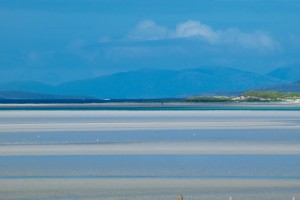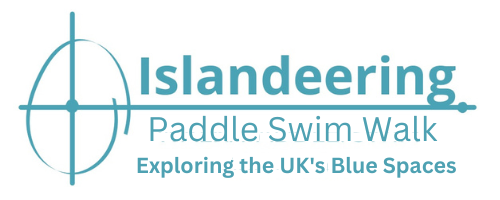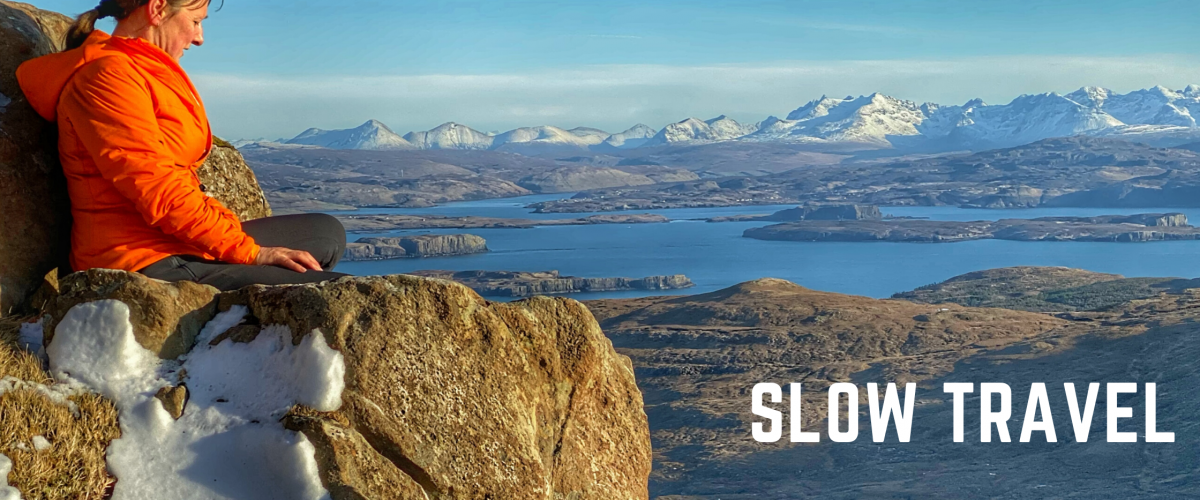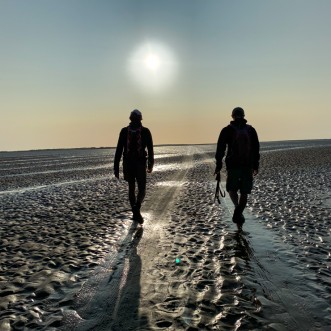Do you ever wonder how you can responsibly travel in the UK? You’re in good company; eco-friendly holidays, green tourism or whatever you like to call it is now top of many people’s choices. There has been much debate in the industry and Forbes recently including sustainable travel (supporting local communities and preserving heritage and culture); off-season travel; getting off the beaten track; less flying; travel by bus, train, bike, boats and walking; staying in sustainable hotels; and slow travel in their list of travel trends for 2020.
Looking at these trends they immediately resonated with me – Britain’s islands could make the perfect destination for sustainable travel. This blog explores the concept of slow travel and options for more sustainable holidays on a few of the islands in the UK that would definitely benefit from the slower travel mindset.
What is slow travel?
I’d heard of slow food but not really slow travel, so I looked it up. In its simplest form, slow travel means travelling by alternative modes of transport. Think train, walking, cycling, boat, SUP or even horse. It’s about feeling the fresh air on your face, ozone in your nostrils and seeking out the hidden places – those you’d miss through a car window, those that connect you more deeply to a sense of place, and those that connect you to the real culture.
Slow travel is also about doing what it says on the tin. Slowing down to see more. Learning a bit more about where you are, relaxing and being part of a place rather than grabbing the ‘best’ bits with the Insta shot the main prize. It’s about reducing environmental impact and staying a few more days to sleep, eat and shop on the island and putting money back into the island economy. It’s less about tick lists and more about the authentic holiday experience.
So far so good then, that’s exactly what Islandeering is all about
Understanding this has made me think of the islands where I have seen more of that ‘highlight bagging’ culture and fast travel. It has made me think of everything that folks may be missing on their trips and so I thought you might enjoy reading about the slow travel alternatives to some of those places.
Slow travel, Isle of Wight
The Isle of Wight is one of the most visited islands in the British Isles and so the hotspots can get rather crowded. To alleviate this the island has developed its own slow travel guide with plenty of ideas for getting off the beaten track.
Here’s some of our favourites:
- Wildlife watching on the Isle of Wight
Like many islands the wildlife is quite special on the Isle of Wight. You can spot ospreys on their migratory route at Newtown National Nature Reserve or the UK’s largest birds of prey, the white-tailed sea eagle, recently re-introduced to the island and now often seen along the east coast. How about the Old English feral goats on Ventnor Down – during the autumn you can volunteer to help the National Trust round them up for their annual health check? You might also fancy your chances seeking out the ‘goatsucker’ aka the nightjar that can be heard when walking across the heathlands of Bouldnor Copse and Brighstone Down at night time. Spooky. Then, upping the bizarre stakes, how about the wall lizards of Ventnor, they are extremely rare in Britain but are readily found in the south-facing stone walls of this town.

- Walking on the Isle of Wight
With 500 miles of rights of way, permissive paths and bridleways through landscapes from sweeping downland and coasts with limestone and sandstone cliffs to hidden valleys, creeks and nature reserves the Isle of Wight has been called ‘England in miniature’. For the walker there is something for everyone from easy paths to challenging hilly routes, all with great views guaranteed. There’s plenty of fabulous walks listed on the Isle of Wight Ramblers website as well as their booklet, ‘12 Rambles by Bus’. Also, watch out for the further development of the England Coast Path which loops around the island and will bring access to parts of the coast that have previously off limits to walkers.
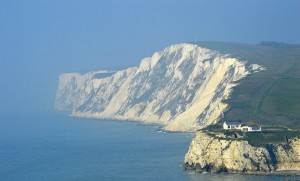
- Cycling on the Isle of Wight
The Isle of Wight is claimed to be one of the best places for cycling in the UK by virtue of its network of quiet back roads and (generally) more courteous drivers than on mainland. Four cycle routes give plenty of opportunities to discover most of the island:
- Round The Island cycle route – 106 km on roads, fully signed, around the whole Island.
- Red Squirrel Trail cycle route – a 51.5 km family-friendly tour of the east end of the island with about 95% of the route off-road and suited to trail bikes and mountain bikes with plenty to see on the way.
- Chalk Ridge Extreme cycle route – 85.3 km with 1500 metres of ascent along the chalk ridge of the Island. Great for views and a lung-busting workout.
- Taste Around The Isle Trail – not suprisingly this is our favourite. Eat your way around the island – that’s us in heaven.
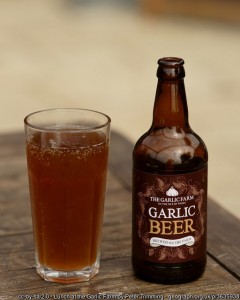
Slow travel Isle of Skye
There’s no doubt that the Quirang, Fairy Pools, Neist Point, Fairy Glen and the Old Man of Storr are some of the most incredible places in the world to experience – but try it all in a day, like many folks do, and you’ll be dizzy! Not only that you’ll miss all of the fabulous off-the-beaten track places in between.
Why not stay a few extra days and do some of the following:
- Visit Skye’s surrounding islands
A short hop on a boat or walking a tidal crossing will transport you to cathedral caves, gin tasting, experiencing your own island for a day, climbing up Skye’s ‘table-top’ mountain, walking a historic road or an unusual outdoor adventure. The islands of Raasay, Rona and Oronsay are simply not to be missed.
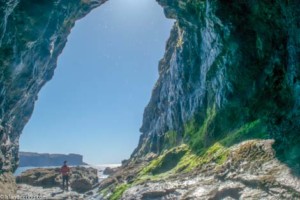
Caves on Oronsay, Skye
- Walking and adventure activities on the isle of Skye
Skye is a walker’s paradise that offers family walks on the spectacular coastline to the most challenging walks and scrambles in Britain on the mighty Cuillin where local guides can safely take you to places few others can reach. You can even spend a few days and walk the spectacular 128 km Skye Trail. If you want to try something new (and wet) you can get off the beaten track with Skye Adventure for gorge walking, canyoning and coasteering to explore the harder to reach natural landscapes of Skye that few ever see.
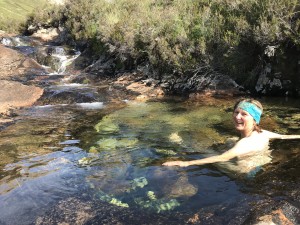
- Slow food on the Isle of Skye
Skye is a foodie’s delight. On the Minginish Peninsula alone you can buy fresh langoustines off the boat, enjoy great coffee at Caora Dhubh and sample the distinctively peaty whisky of Talisker. For eating out treat yourself to the local fine dining at Edibane Lodge or mix with locals and enjoy the great pub grub at the Munro Bar and Taigh Ailean Hotel. You’ll need a long walk to burn this lot off. If your after a wilder experience find your own food on the seashore (mussels, razor clams, winkles) or learn about foraging with a local guide

- Quirky accommodation on the Isle of Skye
Skye has a such a great range of accommodation that it would be real shame if you couldn’t stay over and experience it. There’s nothing quite like sitting in front of a log burner and watching the ever changing blue-grey hues of the Minch or four seasons in a day pass over the Cuillin. There’s plenty of quirky accommodation on Skye too with two spectacularly located mountain bothies at Camasunary and Rubha Huinish; glamping in a yurt and shepherd huts; and wonderfully located campsites – The Kinloch Campsite on Loch Dunvegan, Camus Mor in north Skye and the more well known climbers campsites at Sligachan and Glenbrittle.
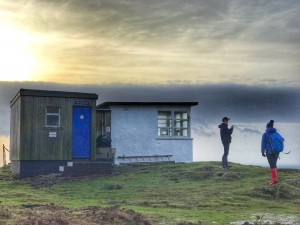
Slow travel Outer Hebrides
The draw for many visitors to the Outer Hebrides is the unique 184 mile road trip along the spectacular island chain from Vatersay in the South to the Butt of Lewis in the North, travelling through ten of the main islands. The thing is though, that even if you took a two-week road trip (and many people take much less), you’ll completely miss so many of the hidden gems en-route. Only slow travel will reveal these – not to mention at least another 30 islands to discover along the way.
With ferries departing from three different ports on mainland (Oban, Mallaig, Ullapool) and Skye (Uig) travelling to five different ports (Castlebay, Lochboisedale, Lochmaddy, Tarbert and Stornaway) on the Outer Hebrides there are all sorts of permutations and combinations for smaller circular routes to spend more time exploring fewer islands in more depth and reaping the full benefits of this. We have visited many of the islands along the chain and have walked or cycled around their outside edge and found delicious local food and excellent coffee. We’ve made friends with islanders over a glass (or two) of island gin. We’ve enjoyed magnificent sunsets and beaches, discovered the mystical places and sat for hours watching whales, dolphins seals, otters and more. We’ve logged all of our ideas in a previous blog for slow travel ideas and on the activity on the pages of islandeering.com. Check them out and tell us you’re not already packing to go.
